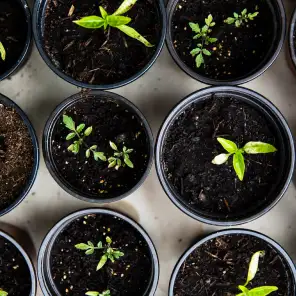The air is plasticized, and we are no better protected from it outdoors than indoors. Minuscule plastic fibers, fragments, foam, and films are shed from plastic stuff and are perpetually floating into and free-falling down on us from the atmosphere. Rain flushes micro- and nanoplastics out of the sky back to Earth. Plastic-filled snow is accumulating in urban areas like Bremen, Germany, and remote regions like the Arctic and Swiss Alps.
Wind and storms carry particles shed from plastic items and debris through the air for dozens, even hundreds, of miles before depositing them back on Earth. Dongguan, Paris, London, and other metropolises around the world are enveloped in air that is perpetually permeated by tiny plastic particles small enough to lodge themselves in human lungs.
Toxic Tires
Urban regions are especially full of what scientists believe is one of the most hazardous particulate pollution varieties: synthetic tires’ debris. As a result of the normal friction caused by brake pads and asphalt roads, and of weathering and wear, these tires shed plastic fragments, metals, and other toxic materials. Like the plastic used to manufacture consumer items and packaging, synthetic tires contain a manufacturer’s proprietary blend of poisons meant to improve a plastic product’s appearance and performance.
Tire particles from the billions of cars, trucks, bikes, tractors, and other vehicles moving across the world escape into air, soil, and water bodies. Scientists are just beginning to understand the grave danger: In 2020, researchers in Washington State determined that the presence of 6PPD-quinone, a byproduct of rubber-stabilizing chemical 6PPD, was playing a major factor in a mysterious long-term die-off of coho salmon in the U.S. Pacific Northwest. When Washington’s fall rains heralded spawning salmon’s return from sea to stream, the precipitation also washed car tire fragments and other plastic particles into these freshwater ecosystems.
Up to 90 percent of all coho salmon returning to spawn in this region have died—much greater than is considered natural. As the study’s lead author, environmental chemist Zhenyu Tian, explained in a 2020 interview with Oregon Public Broadcasting, 6PPD-quinone appears to be a key culprit: “You put this chemical, this transformation product, into a fish tank, and coho die… really fast.”
Microplastic Inside Human Airways
While other researchers had previously searched for, and detected, microplastic dispersed in indoor and outdoor air, Alvise Vianello, an Italian scientist and associate professor at Aalborg University in Denmark, was the first to do so using a mannequin emulating human breathing via a mechanical lung system, publishing his study’s results in 2019. (Despite the evidence his research provides—that plastic is getting inside of human bodies and could be harming us—it was not until 2022 that modern health researchers first confirmed the presence of microplastics in human lungs. And as comprehensive health research has ramped up, we are just beginning to understand how having plastic particles around us and in us at all times might be affecting human health.)
Vianello and his colleague Jes Vollertsen, a professor of environmental studies at Aalborg University, explained that they’ve brought their findings to researchers at their university’s hospital for future collaborative research, perhaps searching for plastic inside human cadavers. “We now have enough evidence that we should start looking for microplastic inside human airways,” Vollertsen said. “Until then, it’s unclear whether or not we should be worried that we are breathing in plastic.”
When I met Vollertsen in 2019, he had speculated that some of the microplastic we breathe in could be expelled when we exhale. Yet even if that’s true, our lungs are indeed holding onto some of the plastic that enters, potentially resulting in damage.
Other researchers, like Joana Correia Prata, DVM, PhD, who studied microplastics at the University of Aveiro in Portugal, have highlighted the need for systematic research on the human health effects of breathing in microplastic. “[Microplastic] particles and fibers, depending on their density, size, and shape, can reach the deep lung causing chronic inflammation,” she said. Prata noted that people working in environments with high levels of airborne microplastics, such as those employed in the textile industry, often suffer respiratory problems. The perpetual presence of a comparatively lower amount of microplastics in our homes has not yet been linked to specific ailments.
While they’ve dissected the bodies of countless nonhuman animals since the 1970s, scientists only began exploring human tissues for signs of nano- and microplastic in earnest during the late 2010s and early 2020s. This, despite strong evidence suggesting plastic particles—and the toxins that adhere to them—permeate our environment and are widespread in our diets. From 2010 to 2020, scientists have detected microplastic in the bodies of fish and shellfish; in packaged meats, processed foods, beer, sea salt, soft drinks, tap water, and bottled water. There are tiny plastic particles embedded in conventionally grown fruits and vegetables sold in supermarkets and food stalls.
Petrochemical-Based Plastics, Fertilizers, and Pesticides
As the world rapidly ramped up its production of plastic in the 1950s and ’60s, two other booms occurred simultaneously: that of the world’s human population and the continued development of industrial agriculture. The latter would feed the former and was made possible thanks to the development of petrochemical-based plastics, fertilizers, and pesticides.
By the late 1950s, farmers struggling to keep up with feeding the world’s growing population welcomed new research papers and bulletins published by agricultural scientists extolling the benefits of using plastic, specifically dark-colored, low-density polyethylene sheets, to boost the yields of growing crops.
Scientists laid out step-by-step instructions on how the plastic sheets should be rolled out over crops to retain water, reducing the need for irrigation, and to control weeds and insects, which couldn’t as easily penetrate plastic-wrapped soil.
This “plasticulture” has become a standard farming practice, transforming the soils humans have long sown from something familiar to something unknown. Crops grown with plastic seem to offer higher yields in the short term, while in the long term, use of plastic in agriculture could create toxic soils that repel water instead of absorbing it, a potentially catastrophic problem. This presence of plastic particles in the soil causes increased erosion and dust—as well as the dissolution of ancient symbiotic relationships between soil microbes, insects, and fungi that help keep plants—and our planet—alive.
From the polluted soils we’ve created, plants pull in tiny nanoplastic particles through their roots along with the water they need to survive, with serious consequences: An accumulation of nanoplastic particles in a plant’s roots diminishes its ability to absorb water, impairing growth and development. Scientists have also found evidence that nanoplastic may alter a plant’s genetic makeup in a manner increasing its disease susceptibility.
Plastic: Part of the Human Diet
Based on the levels of micro- and nanoplastics detected in human diets, it’s estimated that most people unwittingly ingest anywhere from 39,000 to 52,000 bits of microplastic in their diets each year. That number increases by 90,000 microplastic particles for people who regularly consume bottled water, and by 4,000 particles for those who drink water from municipal taps.
In 2018, scientists in Austria detected microplastic in human stool samples collected from eight volunteers from eight different countries across Europe and Asia. By 2023, scientists had detected the presence of plastic particles in people’s lungs, bloodstreams, veins, placentas, feces, testes/semen, and breast milk. And while the long-term health impacts of plastic on the human body are still unknown, it is well understood that plastic has toxic effects on laboratory animals, marine wildlife, and human cell lines.
In a 2022 study, researchers showed that nanoplastics less than 100 nanometers wide can enter the blood and organs of animals and cause inflammation, toxicity, and changes in neurological function.
Clearly, micro- and nanoplastics are getting into us, with at least some escaping through our digestive tracts. We seem to be drinking, eating, and breathing it in.
And these tiny particles are just one component of plastic’s myriad forms of pollution. From the moment plastic’s fossil fuel ingredients are extracted, to its production, transportation, use, and eventual disposal in landfills, incinerators, and the environment, the plastics pipeline emits toxic chemicals that pollute Earth’s air, soils, waters, seas, animals, plants, and human bodies, and releases greenhouse gases that drive the climate crisis. Most often harmed are already underserved groups, including Black, Brown, Indigenous, rural, poor, and fenceline communities everywhere, driving severe injustice worldwide.


